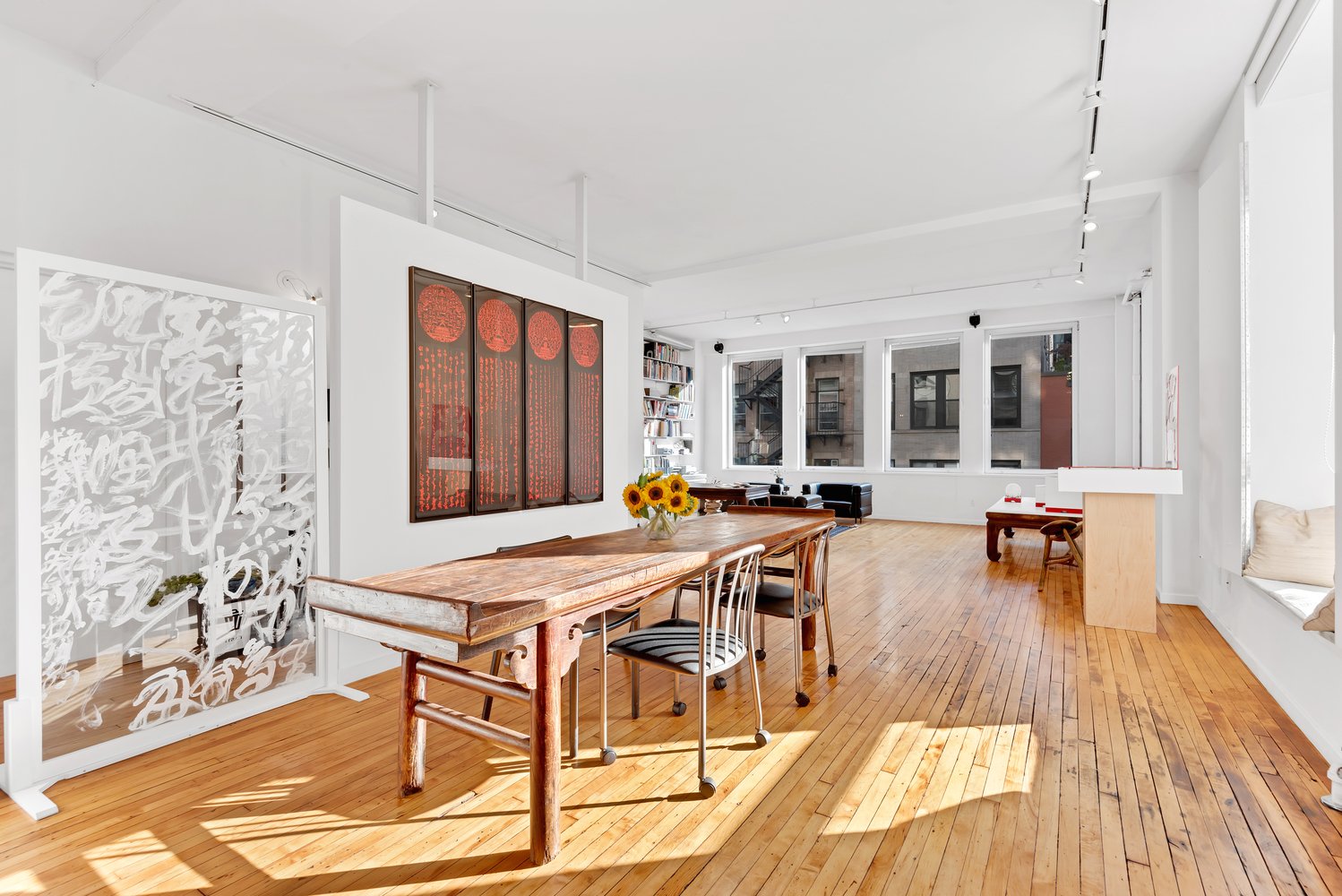
Two art world veterans are parting ways with their Greenwich Village apartment—and all the art inside of it. The two-bedroom, two-bathroom 11th Street co-op owned by author John Tancock and gallerist Christophe W. Mao has hit the market for $4.2 million. For an additional fee, prospective buyers can also purchase the extensive collection of contemporary art housed there, including works by Chinese superstars like Ai Weiwei, as well as furniture from the famed likes of Le Corbusier.
Tancock and Mao have lived in this airy apartment for 20 years, but are selling it because these days they are splitting their time between Europe and Upstate New York. The artworks on offer, altogether valued around $800,000, are just a small part of the inventory belonging to Mao’s trailblazing gallery, Chambers Fine Art. “The Chinese works were acquired directly from the artists, most of whom we have made relationships with over the years,” the duo explained via email. “The Western art was all acquired from auctions.”
The kitchen, with Wu Jian’an’s Rabbits II 兔 II (2022) in the background. Photo by H5 Photo, courtesy of Compass.
In 2019, Tancock co-authored for MIT Press the book Ai Weiwei: Beijing Photographs 1993–2003 (along with Ai and Stephanie Tung). The publication is still banned in China. Tancock was also formerly a senior vice president in the Impressionist and Modern art department at Sotheby’s.
Meanwhile, Mao opened his now Greenwich Village–based gallery in Chelsea in 2000. Since then, he’s helped pave the way for contemporary Chinese artists to forge careers in America, offering early U.S. exhibitions to the now-esteemed likes of photographer Pixy Liao, painter Wang Dongling, and sculptor Shi Jinsong.
The guest bathroom, and its photographs. Photo by H5 Photo, courtesy of Compass.
Tancock and Mao’s incisive joint taste is evident throughout the home. Works on offer include encaustic abstractions by Martin Kline, paper cut panels by Lu Shengzhong, and a colorful mixed media paper cut by Wu Jian’an. An ethereal plexiglass piece by Dongling enlivens the dining space, and a series of black and white photographs by Berenice Abbott and Lou Stoumen lend serenity to its secondary bathroom. The living room features several small artworks alongside its massive library, including a chrome sculpture by Jinsong.
The living room, with the Jinsong sculpture. Photo by H5 Photo, courtesy of Compass.
“They are also open to selling some of the furniture, as much of it was chosen specially for the space,” a representative from Compass, the real estate agency handling the sale, indicated over email—including the 18th-century Chinese painting table and Chinese low bed (formerly used as a coffee table), the Le Corbusier upholstered furniture, and other smaller pieces of Chinese furniture.
The full art and furniture collection is available as a whole, or as separate items. “The pieces certainly don’t have to stay in the apartment, as long as they are well appreciated,” Compass’s representative noted.
The apartment’s current art storage room. Photo by H5 Photo, courtesy of Compass.
But this prewar loft, which features 11-foot ceilings, a long, shelf-lined corridor, and light pouring in from three exposures, was indeed made to display art. “There is a third room that was originally used as a den, but later adapted for storage,” according to the Compass rep. The kitchen’s Viking range, Sub-Zero refrigerator, and vast island offer all the essentials to entertain guests while surrounded by the collection. And the elevator entrance guarantees a grand reveal.
Tancock and Mao are parting with meaningful memories as they look to the future. The Shengzhong works, for instance, appeared in Chambers Fine Art’s inaugural exhibition. Thus, this unusual listing offers an opportunity to participate in the recent history of Chinese art in New York, as Chambers, according to an announcement on its website, begins expanding its scope by adding a younger generation of artists, not all of them Chinese, to its stable.